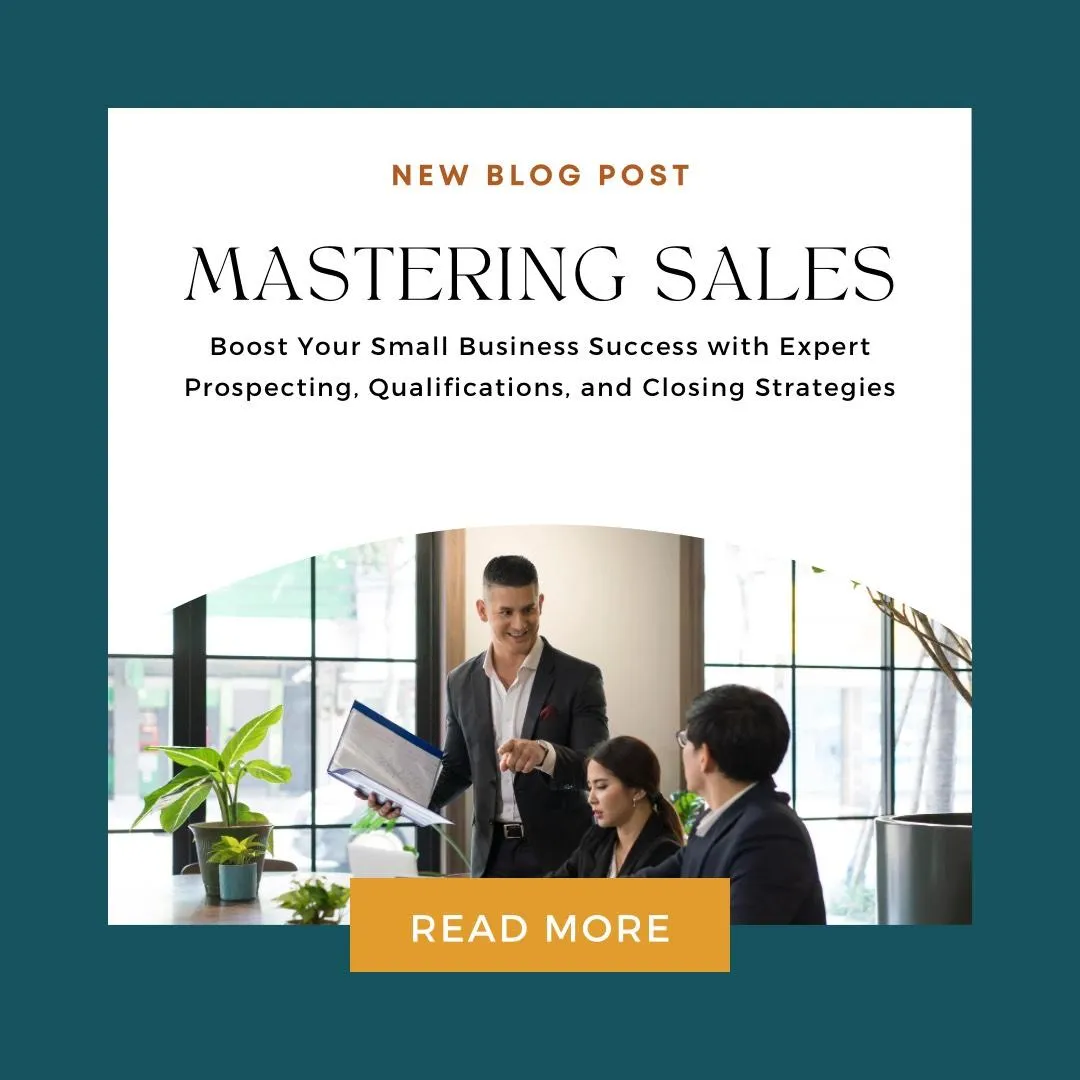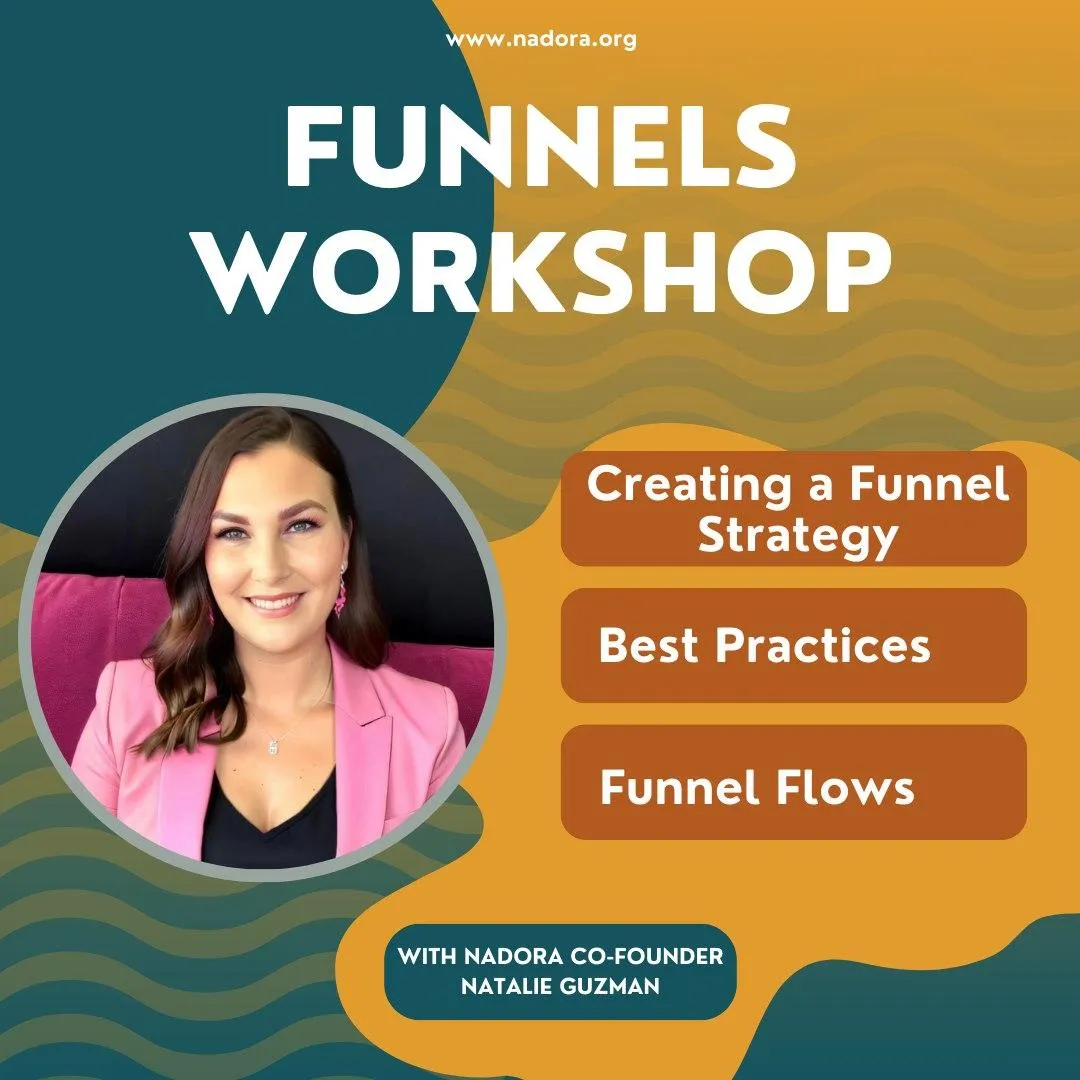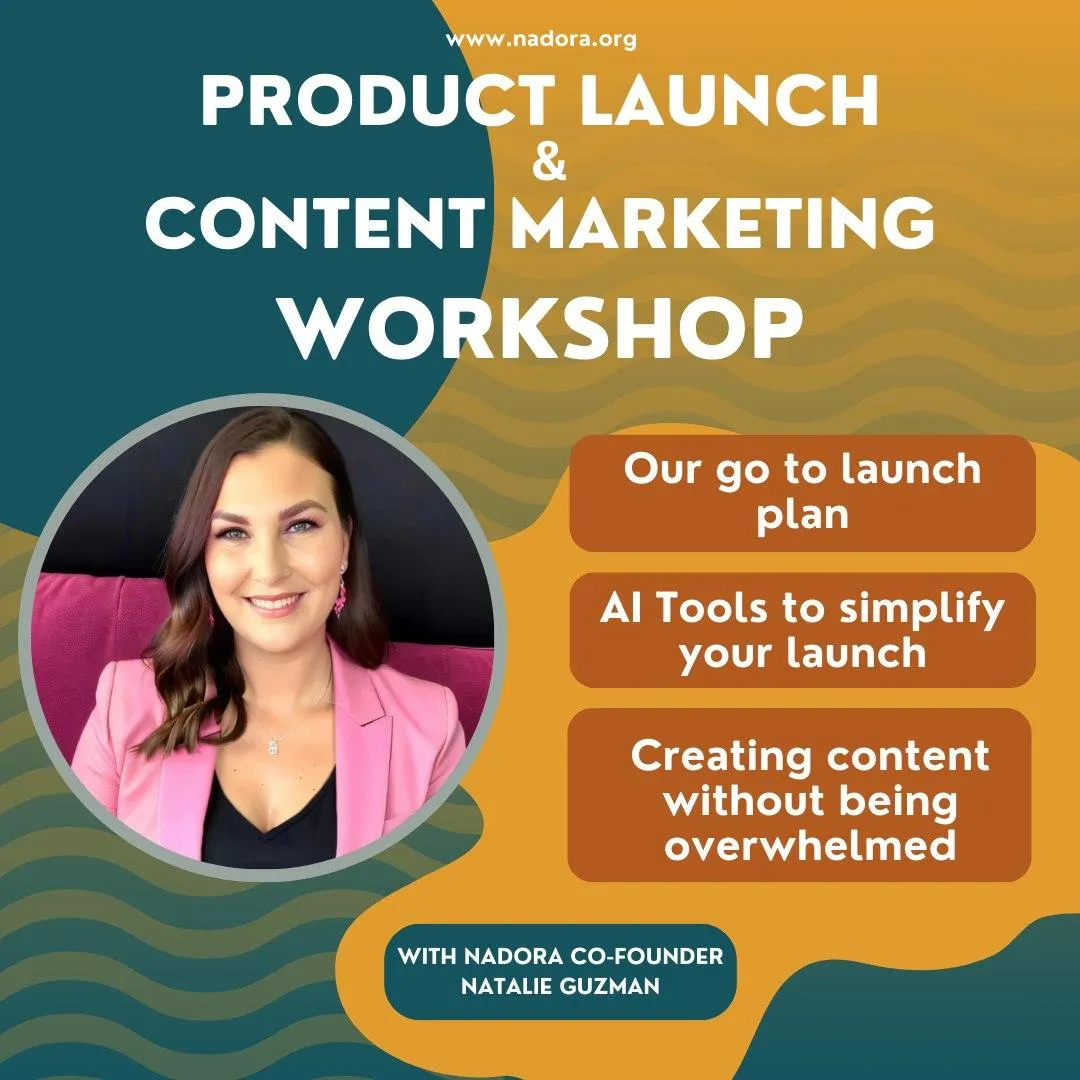

UNLOCK OUR SECRETS TODAY

Mastering Sales: Boost Your Small Business Success with Expert Prospecting, Qualification, and Closing Strategies
“Sales is not about selling anymore, but about building trust and educating." - Siva Devaki
Introduction:
Welcome aboard! In this blog post, we're setting sail into the exhilarating realm of sales. From the thrill of prospecting to the finesse of closing deals, we'll navigate every step of the journey together. Join us as we explore effective strategies and unveil the power of Nadora—a game-changing tool for entrepreneurs. So, buckle up and get ready to chart a course towards sales success in a friendly, informative, and engaging way!
1. Prospecting
Prospecting is like the treasure hunt of sales! It's all about finding new leads early on to kickstart the sales journey. Think of it as a fun part of a salesperson's routine, something they weave into their day or week.
Now, when we say "prospecting," we're talking about a bunch of different ways to find those potential customers. You've got:
- Calling people out of the blue (we call that cold calling)
- Sending friendly emails to introduce yourself (cold emailing)
- Meeting folks in person and making connections (in-person networking)
- Using social media, like LinkedIn, to reach out and say hi
But hey, there's more to it than just these tricks! The goal here is to connect with people who might really dig what you're offering.
Now, how do we do this? Well, sometimes it's hopping online and doing a bit of detective work on LinkedIn or checking out forums like Quora. Other times, it's hitting up events or conferences where you can meet potential customers face-to-face. And hey, don't forget about asking your current customers or buddies if they know anyone who might be interested!
Hot Tip: When you're out there prospecting, consider asking your current customers for referrals. Word of mouth is like a secret weapon for sales teams when it comes to reaching potential customers. People trust recommendations from friends more than a sales rep cold calling them. So, focus on keeping your customers happy and see if they can introduce you to others in their network. It's a win-win!
2. Engage and Assess Leads
The next step in the sales process is all about making meaningful connections and evaluating potential leads. This is where sales reps dive deeper into their interaction with early-stage leads to gather crucial information. Once gathered, your team can then assess whether these leads are a good fit for your solution, and thus, worth pursuing further.
Typically, reps determine if a lead is qualified during a "connect" or "discovery" call. During this conversation, sales professionals ask tailored questions to uncover key details that indicate whether the prospect's business has a genuine need and interest in what you offer.
Here are some examples of qualifying questions:
- "What's your role within your company?"
- "What are your daily responsibilities?"
- "What specific challenges are you looking to address?"
- "Why is addressing this issue a priority for your business?"
- "Are you currently exploring other solutions?"
Hot Tip: The BANT framework (Budget, Authority, Need, Timeline) offers a structured approach to determine if winning the business of your contact is feasible and if they're the right person to engage with.
3. Investigate the Company
After making initial connections and assessing leads, it's time to delve deeper into research. This phase involves taking a focused look at qualified leads to gain a better understanding of who they are.
In this stage, reps typically scour public-facing resources of the prospect's business, such as financial reports, company websites, leadership profiles, and mission statements. This research provides valuable insights into why a company is considering your offering and how to effectively appeal to its decision-makers.
Thorough research enables you to empathize with your prospect's challenges and needs, allowing you to tailor your value proposition to address their specific pain points.
It's crucial to recognize that while businesses in your industry may face similar challenges and objectives, each company is unique. Therefore, conducting research to uncover the distinctive aspects of the business you're engaging with is essential for personalized communication.
Hot Tip: Don't limit your research to understanding broader business interests. Identify key stakeholders and determine the best approach to appeal to them personally. Additionally, verify if your contact holds the necessary authority to move forward with a deal, as sometimes, despite showing interest, they may lack the power to finalize agreements.
4. Crafting an Effective Pitch
Once you've caught the attention of a relevant stakeholder and left a lasting impression, it's time to move on to the presentation stage. Typically, this involves scheduling and conducting a formal demonstration of your product or service.
Given that this step requires significant time investment, it's usually reserved for more qualified prospects. This underscores the importance of the earlier steps of connecting and qualifying leads. After all, you don't want to waste valuable time and effort on a demo for someone who isn't genuinely interested in making a purchase.
Customization is key at this stage. Tailor each presentation to address the specific needs and pain points of your prospect. Moreover, consider bringing along an engineer or executive to showcase the level of service your company provides. This not only adds credibility but also allows for addressing technical inquiries that you may not be best suited to answer.
Hot Tip: Personalization is crucial. Ensure that your demo directly speaks to your prospect's pain points. Avoid generic presentations that merely list features. Instead, focus on illustrating the benefits and outcomes your prospect can anticipate from using your solution. Make it clear how your product or service aligns with their business objectives and improves their day-to-day operations. This tailored approach demonstrates your commitment to meeting their needs and fosters a stronger connection with your prospect.
5. Navigating Objections
Handling objections is an inevitable aspect of sales, and it's crucial to address them effectively. Your team must possess the composure, product knowledge, and intuition to ease concerns as prospects raise them.
While it's challenging, understanding your offering and the prospect's circumstances well enough to anticipate potential objections is key. Utilize insights gathered in earlier stages, coupled with your industry expertise, to thoroughly prepare and preempt objections.
During meetings, respond to objections with tact, empathy, and understanding. Avoid being rude, dismissive, or callous, even if you believe the objections are unfounded. Listening attentively and addressing objections successfully reinforces your value proposition and positions you as a consultative and valuable resource as you approach closing.
It's common for prospects to raise objections, and your sales team should be equipped to handle them effectively. Anticipate objections related to pricing, your company's reputation, the necessity of your solution, or its priority for the prospect.
Hot Tip: Common objections often revolve around pricing, your company's reputation (especially if you're new), the necessity of your solution, and its priority for the prospect. Actively listen to your prospect's concerns, empathize with their perspective, ask insightful follow-up questions, and provide evidence demonstrating your solution's effectiveness.
6. Closing the Deal
Closing the deal is the ultimate goal of every salesperson. It involves finalizing any remaining activities as the deal nears completion, such as delivering a quote or proposal, negotiating terms, or gaining buy-in from decision-makers.
Achieving a closed sale should result in a mutually beneficial contractual agreement between the prospect and the seller. Following closure, the salesperson typically receives a commission based on the negotiated price, and the account usually transitions to an account manager or customer success representative.
Hot Tip: Various closing strategies are available, although not all will resonate with every prospect. It's beneficial to have a range of tactics in your toolkit to reference and adapt based on the specific circumstances of each deal.
7. Nurture and Sustain Relationships
Your sales process doesn't conclude with closing the deal. Consistently nurturing the relationships you establish is essential for reducing churn and fostering new business opportunities.
Happy customers are invaluable assets for your business. Word of mouth referrals from satisfied customers carry significant weight, often surpassing other outreach methods in terms of trust and effectiveness.
Ensure that your customers receive the products or services they've purchased and actively support them in transitioning to the onboarding and customer success teams.
Moreover, the final step of the sales process involves ongoing communication to reinforce the value you provide. This opens up opportunities for upselling, cross-selling, and securing referrals from satisfied customers.
Hot Tip: Early in the sales process, introduce your client to the service and customer success representatives who will assist with onboarding after the deal closes. This familiarity helps smoothen the transition, making it feel less abrupt.
Now, let's explore ways to enhance this process further.
How to Improve Your Sales Process
Evaluate your existing sales process.
Define the journey of your target persona as they interact with your brand.
Specify the actions by prospects that propel them to the subsequent stage.
Establish criteria for exiting each phase of the sales process.
Assess the outcomes of your sales process systematically.
Implementing these proven methods will enhance the effectiveness of your sales process across both your team and customer base.
8. Using Nadora for Sales
Looking to streamline your sales process and supercharge your small business success? Look no further than Nadora – the ultimate software solution for entrepreneurs like you. With Nadora, you can revolutionize the way you manage your sales pipeline with its array of powerful features.
Easily create and send documents, automate communication across various channels including emails, texts, and DMs, and effortlessly design your sales funnel with the simple funnel creator. Track your customers' journey every step of the way with the intuitive pipeline tracker, and gain valuable insights into your sales performance with comprehensive analytics tracking.
With Nadora by your side, you'll have all the tools you need to take your sales process to the next level and drive unparalleled growth for your small business.
Our Sales Checklist
Here is a quick checklist to get you started with you sales. Remember imperfect action beats inaction, get started and keep going.
1. Prospect Identification:
Identify your target audience or ideal customer profile.
Research potential leads through online platforms, industry events, and referrals.
Compile a list of qualified prospects to prioritize outreach efforts.
2. Outreach Preparation:
Craft personalized messaging for different communication channels (e.g., email, phone, social media).
Develop an elevator pitch highlighting your product/service benefits and unique value proposition.
Prepare relevant resources such as presentations, case studies, and testimonials to share with prospects.
3. Prospecting Execution:
Initiate contact with prospects through various channels, including cold calling, emailing, networking events, and social media outreach.
Engage in meaningful conversations to understand prospects' pain points, challenges, and needs.
Use active listening techniques to gather information and identify opportunities for your solution.
4. Lead Qualification:
Conduct discovery calls or meetings to qualify leads based on their budget, authority, need, and timeline (BANT framework).
Ask probing questions to assess prospects' level of interest, urgency, and fit for your product/service.
Determine if the prospect aligns with your ideal customer profile and has the potential for a mutually beneficial partnership.
5. Sales Presentation:
Customize your sales pitch to address the specific needs and pain points identified during qualification.
Showcase the features and benefits of your product/service, emphasizing how it solves the prospect's challenges.
Use visual aids, demos, or presentations to enhance understanding and engagement.
6. Handling Objections:
Anticipate common objections and prepare thoughtful responses in advance.
Listen attentively to prospects' concerns and empathize with their perspective.
Address objections transparently, providing relevant information and reassurance to overcome hesitations.
7. Closing the Deal:
Clearly outline the next steps and timeline for moving forward.
Present pricing and contract terms in a clear and concise manner.
Ask for the sale and guide prospects through the decision-making process.
8. Follow-Up and Relationship Building:
Send personalized follow-up messages expressing gratitude for the prospect's time and interest.
Provide additional information or resources to support the prospect's decision-making process.
Continue nurturing the relationship through ongoing communication and value-added interactions.
9. Post-Sale Support:
Ensure a smooth onboarding process for new customers, providing guidance and assistance as needed.
Maintain regular communication to address any questions or concerns and foster customer satisfaction.
Seek feedback from customers to identify areas for improvement and opportunities for upselling or cross-selling.
10. Performance Evaluation:
Track key metrics such as conversion rates, sales velocity, and customer acquisition cost.
Analyze the effectiveness of different sales strategies and tactics to optimize future efforts.
Continuously refine your sales process based on data-driven insights and feedback from the sales team.
VOTE NOW

VOTE NOW

Hear From Our Clients
Our user-friendly platform provides you with the tools, support and resources you need to thrive. Just see what our users say...


Lorem ipsum dolor sit amet, consectetur adipiscing elit. Pellentesque nec mauris venenatis, aliquam tortor in, commodo metus.
David Doe
Simple Company


Lorem ipsum dolor sit amet, consectetur adipiscing elit. Pellentesque nec mauris venenatis, aliquam tortor in, commodo metus.
Jane Doe
Simple Company


Lorem ipsum dolor sit amet, consectetur adipiscing elit. Pellentesque nec mauris venenatis, aliquam tortor in, commodo metus.
Mich Doe
Simple Company




